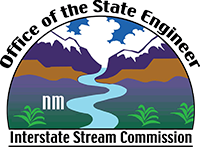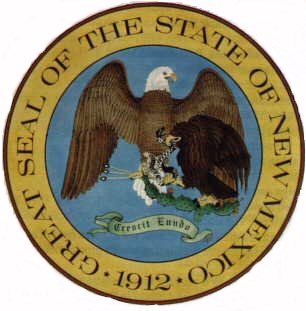Water Planning
- OSE Home
- About Water Planning
- Frequently Asked Questions
Frequently Asked Questions
What is Regional Water Planning?
The heart of Regional Water Planning is for the region to provide enough information, analysis and documentation to answer the following questions:
- What is the region's available water supply?
- What is the region's future water demand?
- How will the region undertake to meet demand with supply?
Why Plan?
Regional Water Planning is necessary, not only to protect New Mexico's water but also to allow all stakeholders within a region to help determine the direction of water use within the region and between regions of the state.
The original impetus for regional water planning came when a federal court ruled that New Mexico's prohibitation against out-of-state transfer of New Mexico ground water was unconstitutional. As a result of this ruling, it became evident that New Mexico must actively plan for its water future. New Mexico's 1987 legislature wisely recognized the need for water planning to protect this essential and finite resource by enacting legislation "Authorizing the Interstate Stream Commission to fund Regional Water Planning Efforts."
How does it work?
The New Mexico Interstate Stream Commission, in response to requests from water planners across the state, in 1994 formally adopted the "Regional Water Planning Handbook". Commission members Palemon A. Martinez of Valdez and Tracy Seidman Hephner of Wagon Mound cochaired a work group of fourteen individuals from diverse constituencies and regions, all with a substantial background in water issues and management who developed the Handbook.
New Mexico has taken a unique approach to planning to protect and preserve its water supply. The legislature recognized and directed that water planning is most effectively done at the local level. Regions, self-defined through hydrological and political common interests, have begun to study their most precious resource. This effort is overseen by the NM Interstate Stream Commission and funded through the Commission and local entities.
Water is a fragile and finite resource. Water quality controls and conservation are the keys to protecting and preserving our water supply. A third and equally important factor is the participation, awareness and involvement of the people of the region. The planning process should encourage local people to express local concerns and discuss the difficult decisions faced by every community in New Mexico. Successful plans are marked by the support, understanding and consensus generated by the planning process.
To assure a consistent, usable product, certain commonalties must exist in Regional planning. The following are included in the Regional Water Planning Handbook.
Who Does The Planning?
Broad public participation is necessary in the development of regional water plans to enhance their acceptance locally and to increase their potential contribution to state decision making in regard to "public welfare" and "conservation" determinations.
Current planning efforts are ongoing in virtually every part of the state. The most successful efforts are guided by the active participation of a full spectrum of area water users. Often referred to as 'stakeholders', the participation demonstrate a willingness to 'sit down at the table' with their neighbors and discuss points of view, concerns and areas of conflict. As elected officials, representatives of private industry, public agencies, and private citizens gather to study the tough issues that face every region, together they build trust, understanding and a valuable insight into each others concerns and needs.
Office of the State Engineer
Santa FeRegional Water Planning is a necessary and logical first step toward Integrated Resource Planning (IRP) in New Mexico. Reduced funding in all sectors will not only necessitate but will facilitate IRP. All water resource agencies, stakeholders and individual users will have to break down the walls and learn to not only work but to cooperate with one another in the development of regional water plans.
--Signature found on original document--
Thomas C. Turney
State Engineer
Office Of The Governor
State Capitol
Santa Fe, New Mexico 87503I have appointed the Secretary to the Interstate Stream Commission, the State Engineer, to chair a cabinet level committee of state water resource department heads to begin envisioning the state's water resources and what steps could be done by the state to protect and administer its water planning in New Mexico, planning that begins with the individual.
--Signature found on original document--
Gary E. Johnson,
Governor, State of New MexicoNew Mexico Interstate Stream Commission
Post Office Box 25102
Santa Fe, New Mexico 87504

